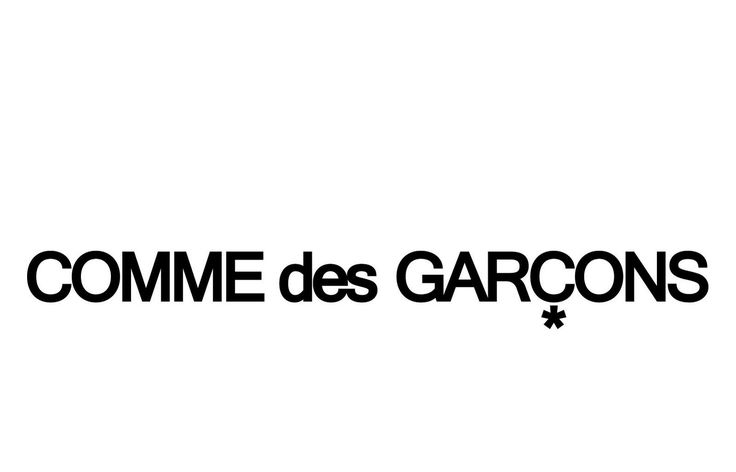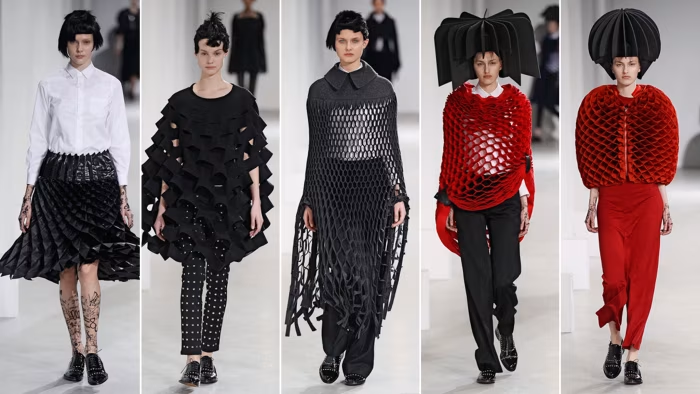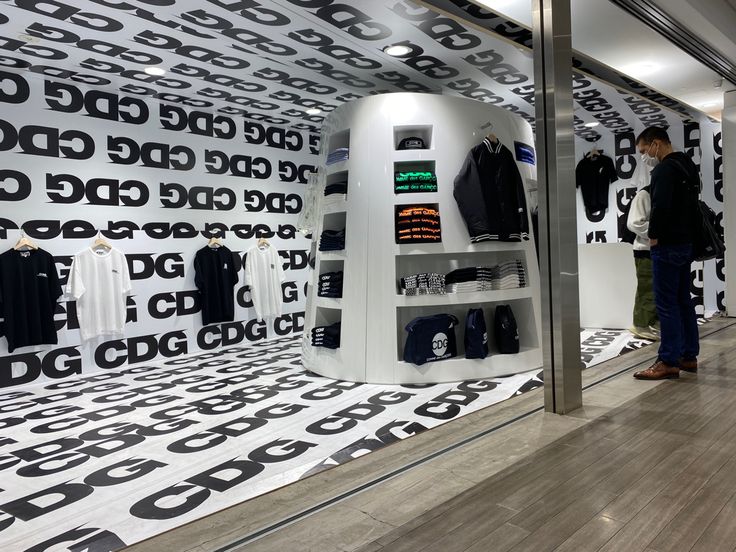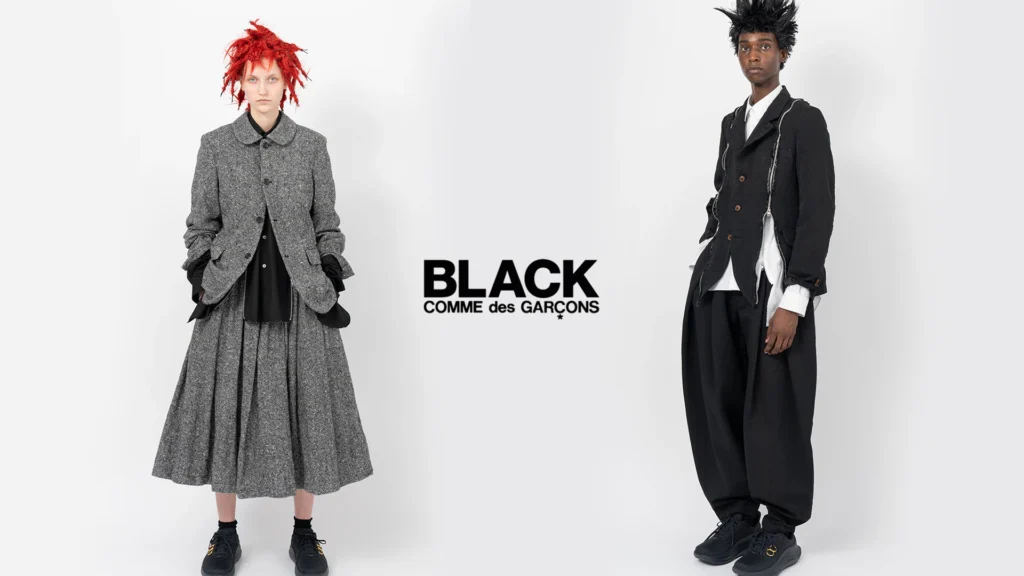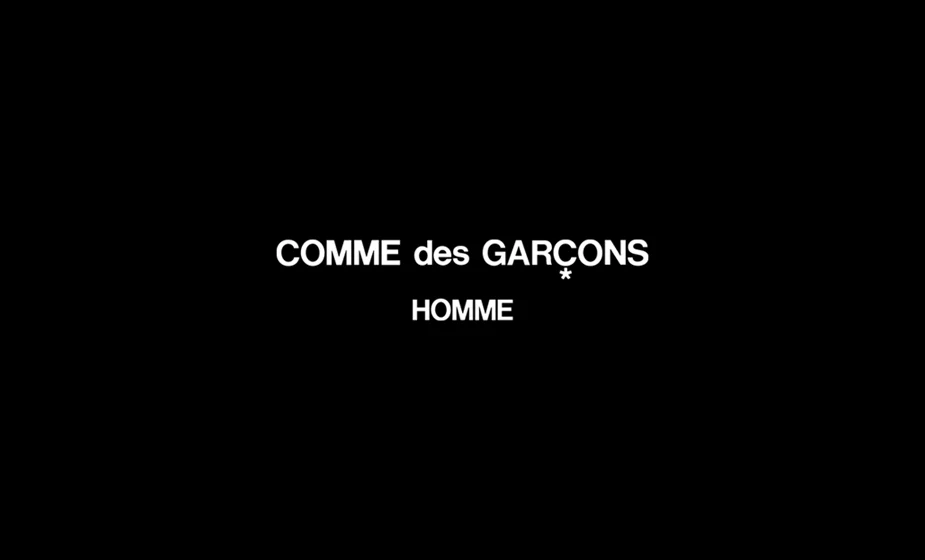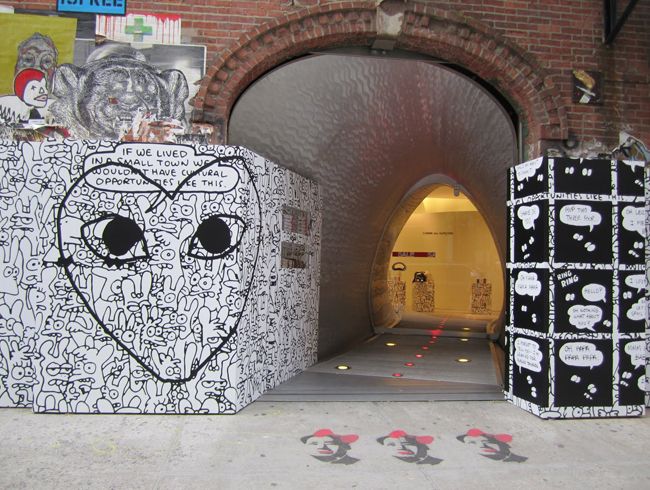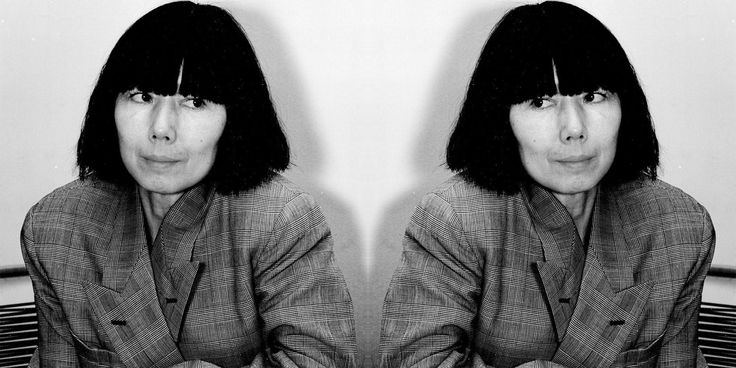Comme des Garcons is beyond fashion. It has become one of the signs of the culture adopted by musicians, artists and celebrities who refer to clothing not only as a decoration. When Kanye West mentions CDG in his songs or when Rihanna models at the Met Gala in the sculptural designs of Kawakabo, it is not just that they are wearing the clothes, they are declaring about creativity and rebellion as well as artistic integrity.
The impact of the brand has an unexplainable ripple effect on pop culture. Hip-hop stars use CDG clothes as a symbol of status. Modern artists use the methods of deconstruction that were used by Kawakubo in their art. Cultural icons utilize her designs to convey intellectualism and have an advantage when attending the events of high proficiency.
It is a massive dive into the history of a Japanese avant-garde fashion house becoming vital to the global pop culture- in recording studios to museum galleries, in red carpets to magazine covers.
Music Industry Influence
Hip-Hop’s Love Affair with CDG
Due to their rebellious attitude, Comme des Garcons was found by Hip-hop at a young age as this brand and rap outsider mentality matched well with hip-hop. In 2016, Kanye West mentioned the brand in his song No More Parties in LA, and in the rap, he talked about CDG among other fashion brands, which established its presence in hip-hop culture. His songs exposed millions of fans to a brand that they would otherwise have never been exposed to.
Pharrell Williams turned out to be one of the most visible champions of CDG during the 2000s and 2010s. He has been extensively wearing Comme des Garcons Homme Plus in performance, interviews, or in other places where he appeared before people who may not even be reading fashion magazines. In 2014, his work with CDG on the packaging of his album Girl, which also incorporated the classic heart logo, provided an easy blend of music and fashion and put the brand in front of the masses of pop fans.
Love with CDG
Tyler, the Creator expanded his appreciation to the level of real creative influence. His label Golf Wang is highly inspired by the aesthetic of CDG, especially the subversive nature of the PLAY brand. He has described himself in a number of interviews as being inspired by the fact that Kawakubo did not adhere to any trends, as this influenced his attitude to music as well as his fashion design, where he saw both as art and not as merchandise.
A$AP Rocky took CDG to a new level of cultural phenomenon out of the traditional fashion camps. His regular features in Comme des Garcons made magazine covers and paparazzi images that presented the brand to younger consumers via the celebrity culture instead of the conventional fashion media. The move follows the adoption of Harlem rapper, which represented a shift of CDG as insider fashion house on the one hand and recognizable cultural brand on the other hand.
Rock and Alternative Music Connections
Radiohead artist Thom Yorke has long worn Comme des Garcons, and liked the anti-business attitude of the label, which reflected his own artistic attitude of his band. The fact that he favors the monochromatic, understated pieces of CDG is indicative of the experimentation aspect of the Radiohead music- neither wanting easy classification nor pandering to the market. Yorke views fashion as a continuation of artistic philosophy and not as a form of decoration.
Patti Smith had been wearing the androgynous aesthetic of the brand way before gender-fluid fashion was a popular discourse. The way she turned to the CDG Homme in the 1980s was in line with her artistic philosophy of denying traditional femininity and expectations of society. She realized that Kawakubo sold the clothes that did not focus on beauty, but rather rebellion, defiance.
The cooperation between Bjork and Comme des Garcons is a creative respect between two unconventional artists. She has used CDG clothes in album covers, concerts, and personal appearances and admires the sculptural method of Kawakubo as clothing compares to the experimental approach of music she has. The relationship between the two artists is more natural than a business one because they both focus more on boundary pushing than on commercial success.
Robert Smith of the Cure enjoyed the dark romanticism of the 1980s at CDG. The gothic look of the band was accompanied by his use of the monochromatic palette and full-figured silhouettes of the brand. This relationship showed that Comme des Garcons might be attractive to musical genres with common values of art and not with specific elements of style.
Contemporary Pop Stars
Rihanna is also seen wearing CDG PLAY basics as well as the flashy mainline garments, proving that the brand is truly astounding with its accessibility to high-end. Her 2017 Met Gala outing in a huge Comme Des Garcons dress with puffy ruffling shoulders on the shoulders created worldwide headlines and magazine covers. It took three individuals to make her ascend stairs, but the appearance was not forgotten and established her reputation as an extreme style icon.
Lady Gaga dresses up in avant-garde style frequently incorporating Comme des Garcons due to her preference of designers that consider fashion to be more of a performance than a simple dress. The conceptual approach of Kawakubo fits the textual knowledge of Gaga that pop stardom is one that is based on continual visual reinvention and presentation of boundaries. Both women employ clothes as artistic means of conveying complicated concepts of identity and creativity.
Celebrity Red Carpet Moments
Met Gala Appearances
The 2017 Met Gala dedicated to Rei Kawakubo was a historical cultural shift in fashion appreciation. One of the most memorable outfits to ever have been worn by Rihanna in the event was her sculptural dress which was featured on magazine covers across the world. The huge construction with bright colors fully changed her figure and proved that the boldest ideas of Kawakubo could be adapted into celebrity wardrobe when worn by a person whose fearlessness would allow her to follow artistic vision into the real.
The challenging theme was taken up by other celebrity personalities more or less successfully. Pharrell wore a Comme des Garcons custom suit in strange proportions made of traditional tailoring. His readiness to put on really experimental clothes instead of protective designer dresses gave evidence of the fact that some celebrities comprehend fashion as cultural discourse, as well as a means of ornamentation and brand image promotion.
Awards Show Fashion Statements
Frank Ocean has been spotted wearing Comme des Garcons to various high profile events, where the brand makes a statement of art seriousness and anti-cultural authority. The fact that he preferred low-key CDG instead of the glitzy designer logos spoke volumes of intellectualism and creative sincerity. The decisions of fashion were made as an inseparable component of his artistically crafted identity as borderline musician.
The long-term association with Comme des Garcons makes Tilda Swinton a red carpet regular of the brand in award ceremonies and film festivals. Her androgynous beauty is well matched with the gender-fluid designs of Kawakubo. She realizes that CDG clothes enables her to display unearthly classiness without concurring to the conventional standards of feminine red carpet clothes and customary glitz.
Cate Blanchett has shown that most of the runway pieces in CDG can be worn by mainstream Hollywood stars such as the Oscars and Golden Globe award ceremonies, where she has donned the fashion. The fact that she is ready to wear really challenging designs, instead of playing it safe with pretty dresses, makes red carpet fashion more than decor, and it makes it more statement-like, which proves that A-list celebrities can be bold and remain graceful and sophisticated at the same time.
Music Video Appearances
In his music videos, Pharrell often includes Comme des Garcon pieces as a visual story telling of the video. The unique aesthetic of the brand assists in making the visual moments memorable that make his videos not look like generic pop productions. This fusion demonstrates that visionary artists embrace fashion as important element of visual image and art.
Art World Connections
Museum Exhibitions and Recognition
The 2017 Metropolitan Museum of Art show “Rei Kawakubo/Comme des Garcons: Art of the In-Between” was the ultimate institutional confirmation of fashion as fine art. Fashion curator Andrew Bolton selected 140 garments not chronologically but thematically, and he presented the work of Kawakubo as worthy as an academic study and exhibition, just like painting and sculpture.
The exhibition welcomed 708,000 visitors throughout six months of its operation, which is impressive attendance as it shows that people are highly interested in fashion that challenges the status quo and takes artistic risks. The average time that visitors spent in galleries was 85 minutes, which is way longer than the average duration of visits. Comme des Garcons demonstrated that fashion could be taken seriously by people as other conventional fine arts.
Victoria and Albert Museum in London also hold considerable collections of CDG in permanent collections, and have historical clothes dating back through centuries. The fact that they have purchased some of her work by Not Making Clothing and other conceptual collections is in itself an indicator by the institution that the work of Kawakubo goes beyond seasonal fashion to become a historical piece of crucial cultural artifacts that should be preserved to be utilized by the generations to come.
Comme des Garcons archives Comme des Garcons has extensive archives in the Kyoto Costume Institute in Japan which describe the development of the brand since 1969. This is the academic conservation that allows researchers and students to study the innovations of Kawakubo decades into the future and approach her work as a topic of serious academic study.
Contemporary Artist Collaborations
Cindy Sherman worked with Comme des Garcons on the campaigns, which blended the lines between the field of fashion photography and the field of fine art. Her unrealistic, even terrifying photographs of CDG clothes were right in line with what Kawakubo was eager to break the rules of beauty and the traditional female fashion images. The collaboration showed how fashion can be used to fulfill the conceptual objectives of contemporary art and not just selling products.
Millinery by artist Stephen Jones has been used in CDG shows over decades, the sculptural headpieces perfectly matching the clothing of Kawakubo. His style considers the whole body as canvas to express art as opposed to the hats being viewed as accessories. The decades-long partnership that they have had makes fashion the most effective when the designers consider it as the wholeness of an artistic vision that incorporates several creative fields.
In his day to day activities, Takashi Murakami often wears Comme des Garcons Homme on gallery openings that he frequently attends, as well as in his appearances in public. His own business works in the same strategies- saleable items such as keychains and prints earn money to fund grandiose gallery installations. Both of the artists recognize the complicated interconnection between business and art in the modern culture.
Influence on Contemporary Art
In their sculpture and installations, conceptual artists allude to deconstruction styles employed by Rei Kawakubo. Her decision to make the things she is familiar with strange by manipulating them, resembles the strategies of artists such as Marcel Duchamp and modern artists of the same intention. The flow is two way since fashion and art constantly enlighten one another.
The CDG clothing has been used by performance artists to create works about identity, gender and body politics as the garments are the best tool since they could change the silhouettes. Kawakubo is basically offering tools of identity experimentation that designers steal to use in their own conceptual interests, outside of their fashion intentions.
The Legacy
Comme des Garcons have done something extraordinary, they have managed to be artistically-independent and at the same time culturally omnipresent in various creative domains. The brand is co-existent as elite fashion house and identifiable pop culture icon that musicians, artists, and celebrities use to convey certain values and aesthetic priorities that are beyond fashion consumption.


